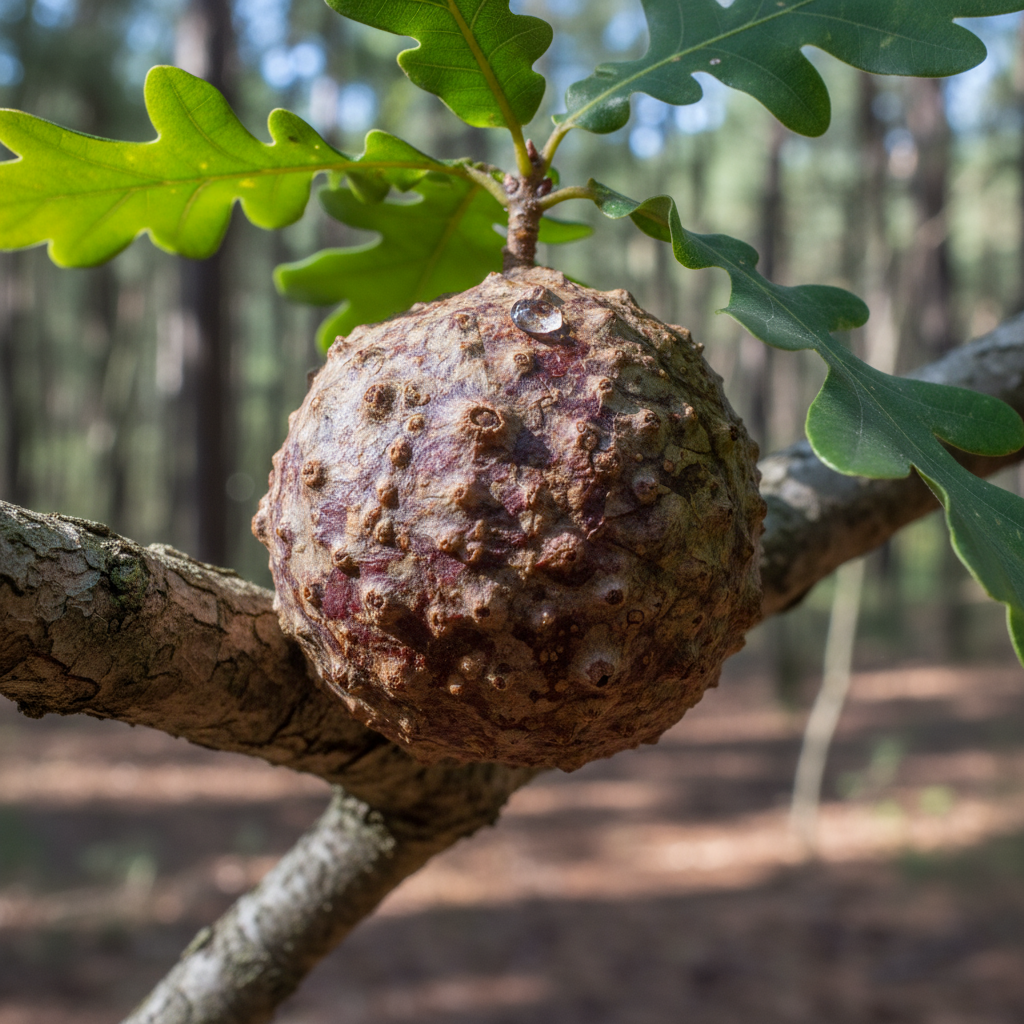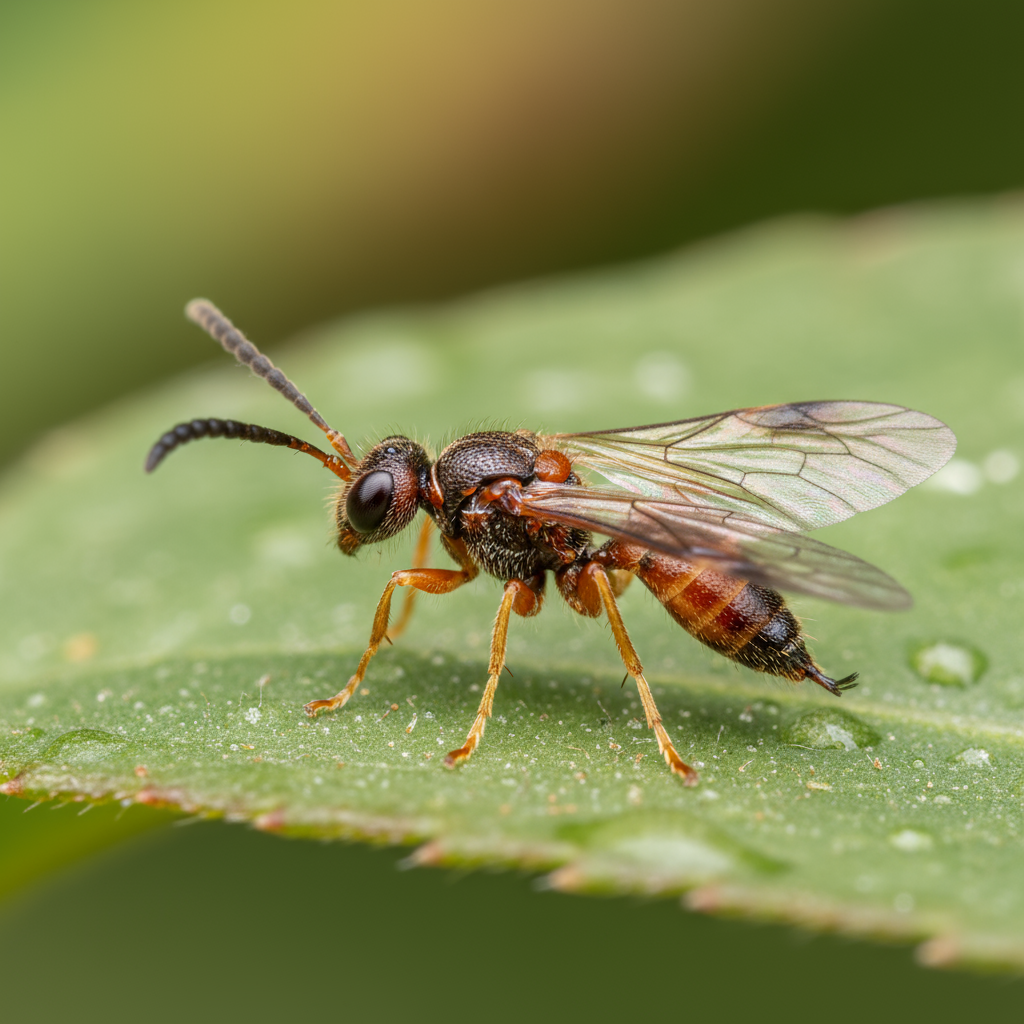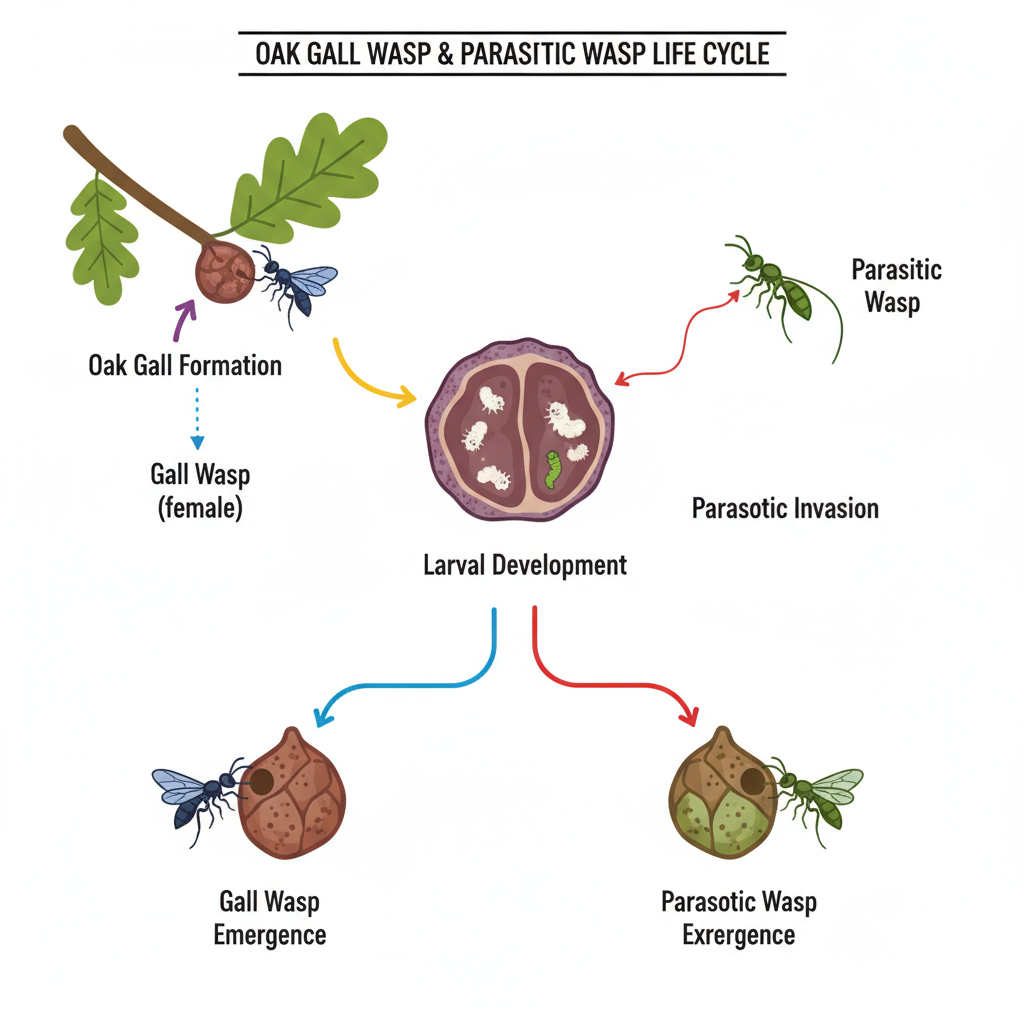New Discovery: Unknown Parasitic Wasp Species Spreading Across the U.S.
Recent scientific research has uncovered two previously unknown species of parasitic wasps living in the United States, a discovery that sheds light on the rich biodiversity hiding right in our backyards. These tiny insects, part of a fascinating community known as parasitoids, parasitize oak gall wasps—small insects that stimulate the growth of tumor-like plant structures called galls on oak trees.

The Hidden World of Parasitic Wasps and Oak Gall Wasps
Oak gall wasps themselves are remarkable creatures known for their ability to create unique galls, which vary widely in shape and size—from tiny pinheads to apple-sized spheres. These galls serve as a home and food source for the developing wasps. However, parasitic wasps have evolved a clever strategy: they lay their eggs inside the galls, and their larvae consume the gall wasp from within, playing a vital role in regulating insect populations and maintaining ecological balance.

The Breakthrough Study and Genetic Analysis
Led by Associate Professor Kirsten Prior at Binghamton University, the research team used advanced genetic sequencing techniques to study parasitic wasps collected across North America. Their efforts revealed that what was once believed to be a single species, Bootanomyia dorsalis, actually comprises two genetically distinct clades introduced separately to the U.S. The New York group link closely to populations in Portugal, Italy, and Iran, while the West Coast group traces back to Spain, Hungary, and Iran.
This discovery was significant, suggesting that these parasitic wasps entered the U.S. at least twice through separate introductions, likely facilitated by movement of non-native oak trees or possibly even accidental transport by human travel.
Implications for Biodiversity and Ecosystem Health
Parasitic wasps represent one of the most diverse animal groups on Earth, yet their small size and complex biology have made them challenging to study—until now. The identification of these introduced species is crucial in understanding how native insect populations might be affected. While it’s not yet clear if these wasps threaten local species, their spread and ability to parasitize multiple hosts raise important ecological questions.
Moreover, this discovery highlights the importance of citizen science and collaborative research. Platforms like Gallformers.org and iNaturalist encourage enthusiasts and scientists alike to document galls and their inhabitants, enhancing biodiversity databases and fostering public involvement in conservation science.

The Path Ahead: Exploring the Diversity of Parasitoids
Supported by a National Science Foundation grant, this ongoing research venture aims to unravel the complex relationships between gall-forming insects and their parasitic foes across North America. By collecting samples from diverse habitats and applying modern molecular tools, scientists hope to map patterns of coevolution, introduction pathways, and ecological impacts.
Why This Matters
Understanding parasitic wasps and their interactions with hosts is more than an academic exercise. Parasitic wasps often serve as natural biological control agents, keeping pest populations in check and supporting healthy ecosystems. As global changes threaten biodiversity, illuminating these hidden dynamics is vital for developing sustainable environmental management strategies.
By focusing on recent scientific findings, ecological significance, and community science initiatives, this article is optimized with keywords like “parasitic wasps,” “oak gall wasps,” “biodiversity research,” and “biological control,” which can help it rank well on Google. Visuals of oak galls and parasitic wasps, as well as links to citizen science platforms, would further enhance engagement.
